Updated!
November 21, 2005
(Edited 2/12/2020)
Alternate (actually the first) method of saving and loading patches
For many of you, there may come a time when you need to save your sound
patches for archiving purposes or when you are upgrading your firmware or
replacing the battery. Of course, if you had spare cartridges this would be
simple. However, there is another way that will work.
The ESQ1 has tape in and out jacks that allow you to record the patches and
sequences to a cassette and play them back as needed. Since cassettes and
recorders are becoming scarce and the poor quality of the tape could cause
dropout and a loss of data, many have discontinued this procedure.
If you have a PC, Laptop, or Mac with a sound card installed and working, you can use this in
place of the cassette recorder and save the data as a sound file. Always record
it in standard CD quality (stereo, 44.1k, 16 bit). This way you can burn your
patches to a CD or share them with friends by emailing the file to them.
On the road, if you need to load patches, you could use a "Walkman"
type portable CD player to load the patches. You could archive literally tens of
thousands of patches onto one CD.
When recording the data, you will need to make sure the record level below
100% or about -5db. Otherwise distortion issues could cause errors in data. If you have a
sound editor program, you can view the waveform to determine this. Try recording
from 85 to 95% amplitude and do not alter the wave data. Save to a .wav file
format.
You can find the detail instructions on Page 80 of the ESQ1 Musician's
Manual.
Nov 20, 2005 Update! I have tested this procedure and it works.
The tape input and output of the ESQ1/SQ80 uses a 1/4 inch jack. You need to
obtain a patch cable with 1/4 inch on one end and suitable connector for your
sound card or mixer console.
In my application, I sent the data signal into my recording console and
recorded it into CoolEdit Pro. I recorded it at about 3db below 0db. I saved it into
a wave (.wav) file. The file was almost 9 meg in size. I decided to MP3 it and
see what affect it would have on the integrity of the data. I found no
degradation using standard (default) MP3 settings of 128kbps/44.1k/stereo/CBR/11:1
.
I also found it wasn't necessary to increase the amplitude of the waveform to
0db. In fact, playing the data back at 0db actually caused a data error. The
signal level coming out of the ESQ1 should match the signal level going into the
ESQ1 which is 1.0 volts peak to peak. Actually, I tried decreasing the amplitude to
-15db and the ESQ1 was still
able to receive data without errors.
Remember, you need to move the patch cable from the play out to the tape in
to load patches to the ESQ1 or have a second cable.
This means one can load massive amount of patches from a CD into the ESQ1 at
will. As stated above, you could burn a CD and play it back from a portable
"Walkman" type CD player available at most department stores for less
than US$20.
It is not necessary to record the data in stereo, but it is easier to MP3 it
for archival purposes or save to wave file for burning to CD's in music format (CD Audio).
If you would want to see and try a typical internal cart dump of patches from V3.5, here
it is in MP3 format:
https://www.neatcircuits.com/ensoniq/cart_dump_v35.mp3
This file is about 815k in size.
For you tekkies, the following information may be useful:
I connected a scope to the tape output and noticed some noise at 10 mhz or
0.1us. It was about 200mv p-p. Not really a problem recording it because
recorders won't pass 10 mhz. It does look junky superimposed on the data display
though.
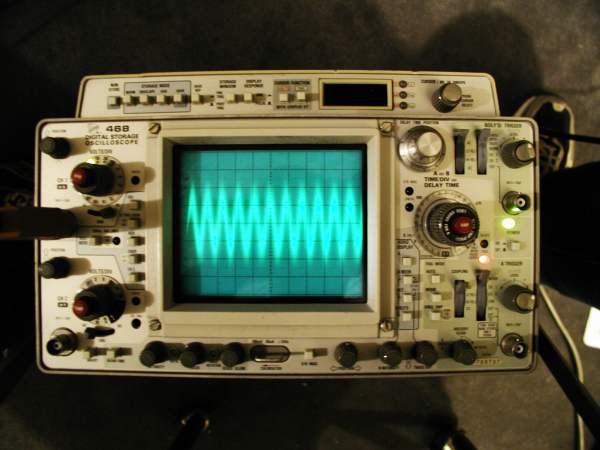
Here's the background garbage on the tape output.
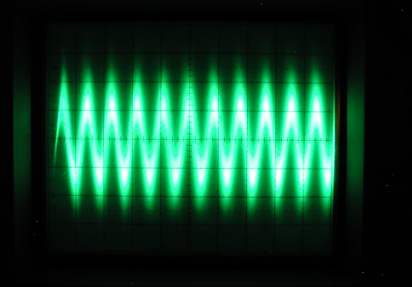
Looks like a 10 mhz clock or something.

This is the header data. One volt peak-peak. 0.2v/div.
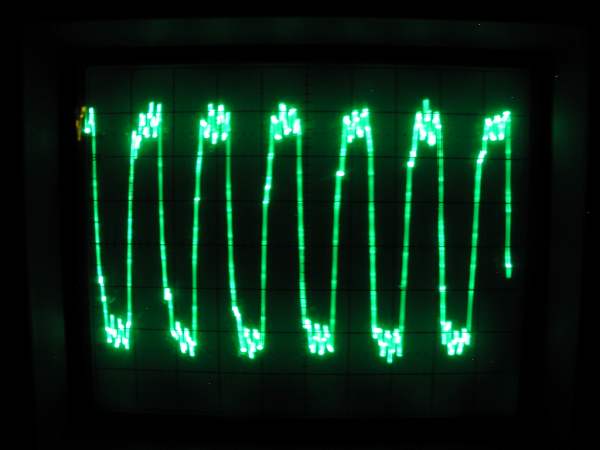
Again
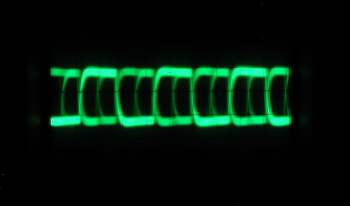
This is what the data looks like coming out of the ESQ1
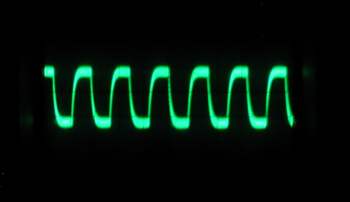
This is just the header data. Notice the wide fuzzy trace. This is because of
the 10 mhz noise superimposed on the audio.
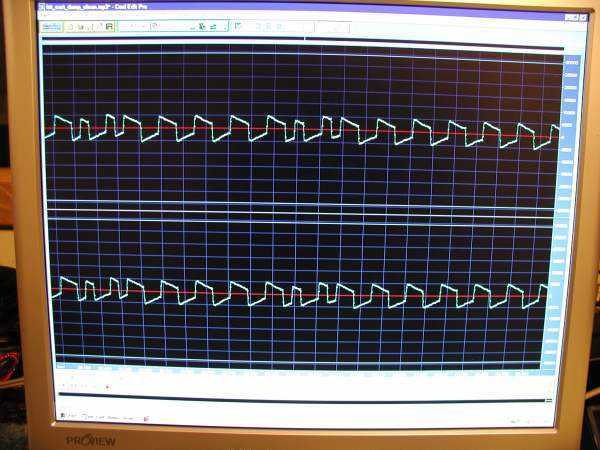
This is what the data looks like on CoolEdit Pro. Notice how sharp the waveform
looks like without the 10 mhz that didn't get recorded but filtered in the sound
card.
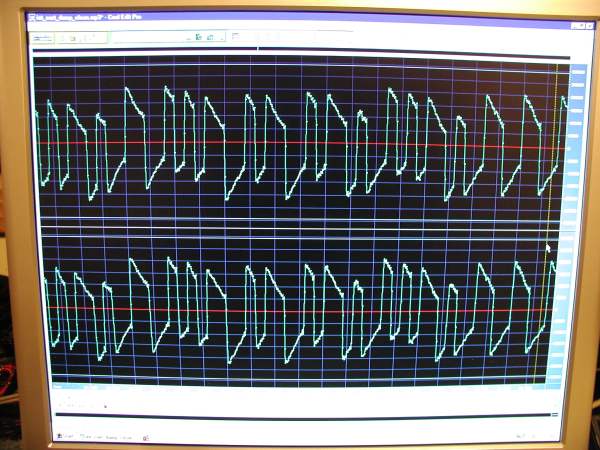
Increasing the amplitude like this isn't necessary but it looks better.
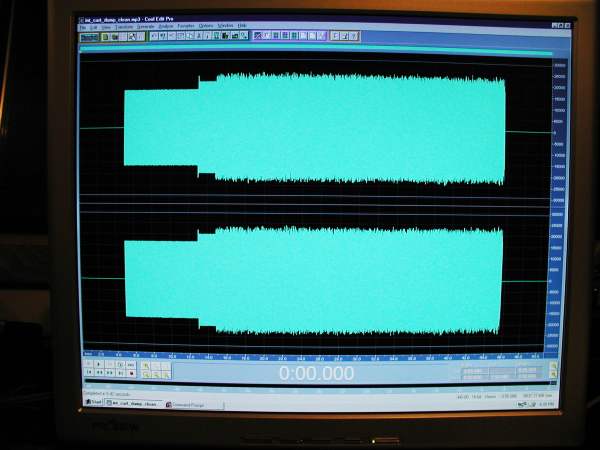
Here's what the complete file looks like if you download it. The first portion
of the wave file is the header. This constant data stream allows the ESQ1 to
sync with the incoming data preparing it to record. The next portion is the
actual data being loaded into the internal cart location. If any data is corrupt
during the transmission, a checksum will catch it and throw out the whole
download. The display on the ESQ1 will alert you to this condition and keep the
existing internal patches.
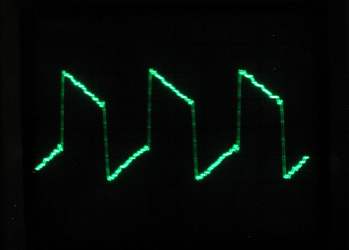
This picture shows three cycles of header data. In an ideal world this waveform
would be square and not ramped. Because of the normal high frequency rolloff,
this will make the waveforms ramped. This has no degrading effect of the
performance of the data transfer as long as the ramp doesn't get too steep.
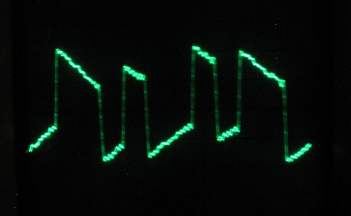
This picture shows a sample of actual data information.
Update #2
After some thought and some tweaking, I decided to process the AFSK data wave
file to generate a more "text book" waveform. This is what the whole
file looks like now after DSP technology was applied:
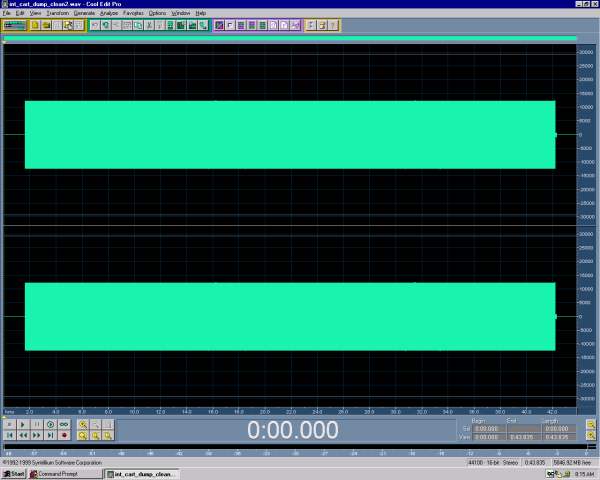
A zoomed in look at the data is below:
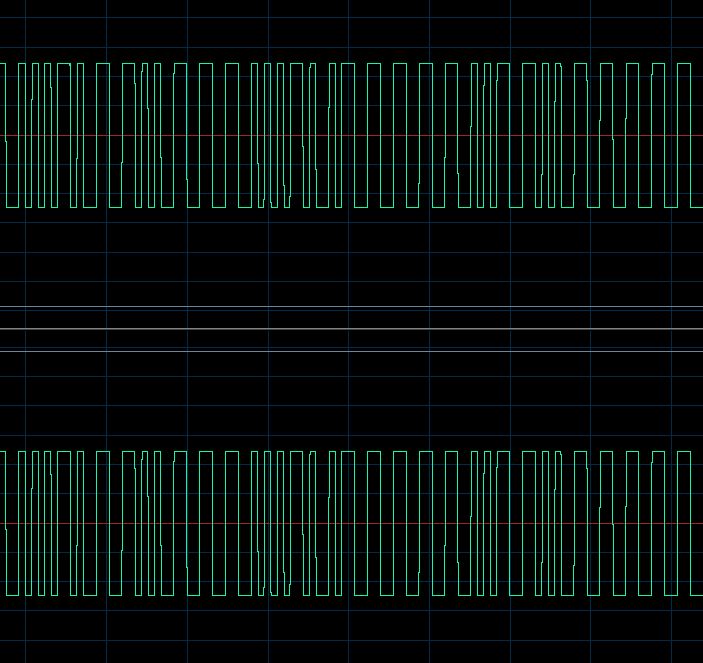
Although the original analog version works fine, this takes out any possible
chance for error.
An MP3 copy of this file is here. It
doesn't look exactly like the wave file above because of the compression
artifacts but is close.
Back to Ensoniq Hacker Home Page
© 2020 Rick
C.

